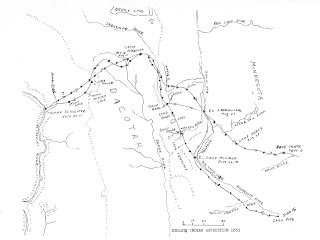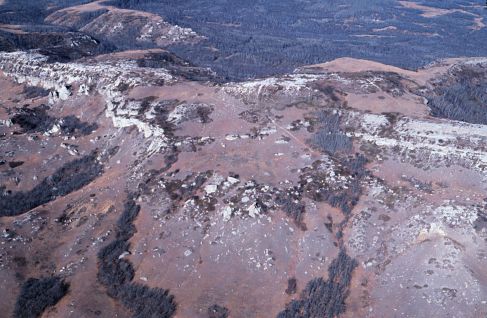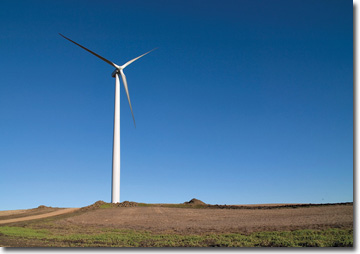Sundogs. In Lakota they're referred to as campfires.
Cold On The Great Plains
Winter & Sundogs On The Missouri River
Winter & Sundogs On The Missouri River
By Dakota Wind
BISMARCK, N.D. - This morning was cold. It’s not enough to say it was cold. This morning was a little windy, and it’s not enough to say that it was windy because this is theGreat Plains , the land of sky and wind. I like to think
of it that way. It sounds minimal and majestic.
BISMARCK, N.D. - This morning was cold. It’s not enough to say it was cold. This morning was a little windy, and it’s not enough to say that it was windy because this is the
This
morning was cold. It was the kind of cold that reaches through one’s clothes
and seizes your intimates with its freezing embrace and just squeezes the
warmth right out. It was the kind of cold that made me blink back tears when I
dared to step out and start my little beast.
The
snow and ice sounded brittle like styrofoam when I stepped on it. Jesus, on the
Great Plains it gets cold enough that even the snow and ice groan and ache.
My
little beast wasn’t feeling like a beast and it started like a crotchety bastard.
I swear it fought the ignition, and then sputtered thrice before defiantly turning
over. On the Great Plains , cars have character
and mine was acting like a frosty bitch.
...I filled a bowl with frosted flakes which seemed to fit the feel of the morning so far...
I
let it warm up in the garage whilst I finished prepping for the day. I dived
into the dresser and rolled into a pair of khaki pants, thick woolen socks and
a Def Leppard t-shirt, and then I filled a bowl with frosted flakes which
seemed to fit the feel of the morning so far. My son Isaiah – we call him Zay –
meanwhile had already broken fast, dressed and took care of our little pup that
the boys call Penny, but I like to call Pensethilea after the Amazon warrior
whom Achilles fell in love.
We
got in the car and found that the frosty bitch had warmed up agreeably and we
set off down the road.
The
sun hadn’t yet risen as we pulled onto the main road. My car seemed to protest
against acceleration as I brought the needle up to fifty-five. The drive was
normal, that is to say it was boring and uneventful but for the promise of the
sun, of light and warmth, as purple twilight became golden dawn.
I turned my car back onto the road and drove into the sunrise and sundogs.
I turned my car back onto the road and drove into the sunrise and sundogs.
On
each side of the sun as the daystar ascended into the sky appeared the striking
phenomena commonly called sundogs. I
don’t know about how or why the natural event became known as a sundog, and I’ve
never been particularly fond of the term.
I
dropped my boy off at school and told him to have fun, but not too much fun. I
have a benediction I like to impart on my boys when I drop them off at school, “Work
hard. Study. Graduate, and go to college.” I don’t know that they care to hear
me say it or even if they listen, but its something that I remember by
grandmother said to me. I don’t recall that I listened all the time either when
she said it.
I
turned my car back onto the road and drove into the sunrise and sundogs.
The
Lakota people have the traditional story about the sundog, and know it by
another name, Wi’ačé’ičiti. It means The Sun Makes A Campfire For Itself. Suffice to say that only on the Great Plains does it get cold enough that even the sun
makes fires for itself.
It
was an awesome site to witness. The sundogs, the campfires if you will, burned
rainbows on each side of the sun. The sun itself was set in colors of purple
and pink and nearly unbearable to directly at, but I imagine that it’s like
looking at the first dawn of creation. The campfires
are still hanging in the air when I park my little beast.
...silent beauty of the morning sun and the campfires make me feel small inside as I stand in my reverie...
...silent beauty of the morning sun and the campfires make me feel small inside as I stand in my reverie...
The
campfires remind me of my childhood. They
remind me of the living room in my grandmother’s home back on Standing
Rock. The living room had floor to ceiling
windows on one side and another large window on another side which allowed for
sunlight from morning until late afternoon. I’m reminded of sunrises over Lake Oahe
The
immense and silent beauty of the morning sun and the campfires make me feel small inside as I stand in my reverie. I
wouldn’t call myself traditional, but I’m suddenly inspired to reach into my
glove compartment and take out my tobacco. I remove my glove and delicately
reach for a pinch of sweet potent tobacco and sprinkle it betwixt my fingers in
fond remembrance of my grandparents.
They
watched over me and now its my turn to watch over my sons.
















-%5BFacing--Southwest%5D---Nat'lParkService-SiteSurvey-2010-Fig.2.3.png)
-%5BRockCairnRemains-on-Knoll%5D---Nat'lParkService-SiteSurvey-2010.png)


















